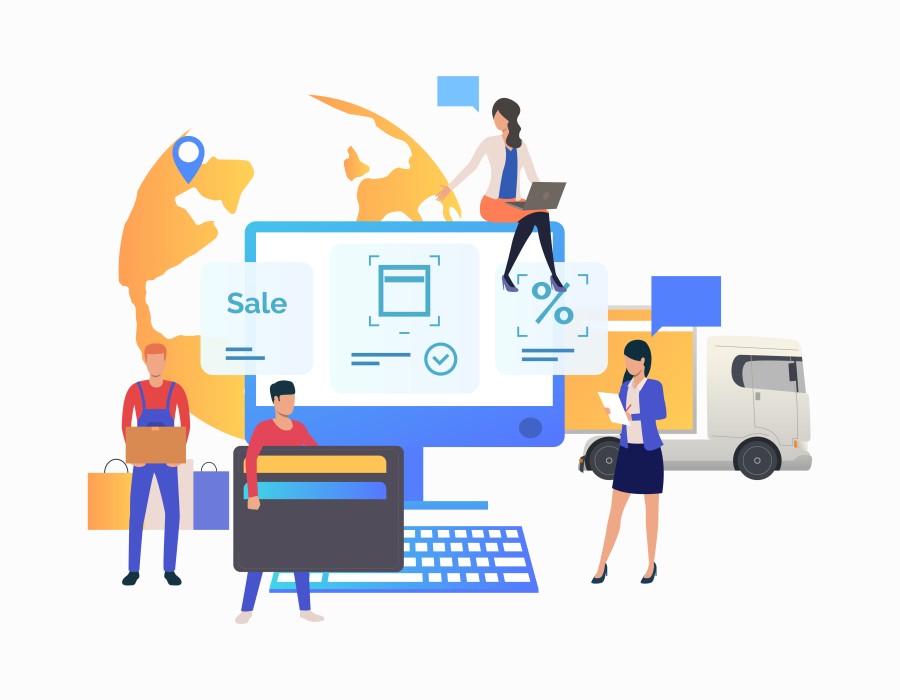In today’s digital-first economy, fintech is transforming how individuals and businesses manage financial transactions. At the heart of this evolution are Payment Software Solutions, which have become critical in enabling seamless, secure, and efficient payment processing across a wide range of platforms and devices. From mobile wallets and online checkout to contactless card readers and QR payments, the fintech sector continues to push the boundaries of what’s possible.
As consumers demand faster, safer, and more flexible financial interactions, fintech companies are responding by building sophisticated, scalable payment systems that address the unique needs of various industries. Let’s explore how these software solutions are powering fintech innovation, redefining user experiences, and reshaping global commerce.
The Role of Payment Software in Fintech
Fintech, short for financial technology, leverages digital tools to enhance and automate traditional financial services. At the center of this transformation is the ability to process payments effectively. Payment software enables businesses to manage transactions across multiple channels—whether online, in-store, or through mobile applications—using secure, real-time systems.
These solutions are not just about moving money; they are about creating smarter, more integrated systems. With features like multi-currency support, automated reconciliation, fraud detection, and customizable reporting, modern payment software helps businesses reduce operational costs, improve compliance, and enhance customer trust.
Key Drivers of Innovation
1. Digital Wallet Integration
One of the major breakthroughs in recent years is the widespread adoption of digital wallets such as Apple Pay, Google Pay, and PayPal. These wallets allow users to store payment information securely and make quick purchases without entering details every time.
Payment Software Solutions integrates with these wallets to streamline transactions, enabling fintech firms to offer fast and convenient checkout options. This seamless experience has not only improved customer satisfaction but also increased conversion rates for merchants.
2. API-Driven Ecosystems
Fintech companies are increasingly leveraging APIs (Application Programming Interfaces) to build modular, customizable payment systems. APIs allow third-party apps to integrate payment functionalities into their platforms, such as e-commerce sites, mobile apps, or CRM systems.
For example, a startup can use a payment API to accept credit cards, issue refunds, or set up recurring billing, without building the infrastructure from scratch. This flexibility accelerates product development and allows for faster market entry, fostering innovation at all levels.
3. Enhanced Security with Tokenization
Security remains a top priority for any payment system. Modern software uses tokenization—a method that replaces sensitive card details with random strings of characters (tokens)—to prevent fraud and data breaches.
Tokenization, along with encryption and multi-factor authentication, ensures that customer data remains safe, whether transactions occur online or in-store. These advanced security measures have significantly increased consumer trust in digital payment platforms.
4. Artificial Intelligence and Machine Learning
AI and machine learning are revolutionizing payment processing by automating decision-making and risk assessment. These technologies are used for fraud detection, user behavior analysis, and personalized payment experiences.
For instance, AI can detect unusual spending patterns and flag potential fraud in real-time, protecting both merchants and customers. Machine learning algorithms also help optimize transaction routing, which can reduce processing fees and improve transaction speed.
The Shift to Omnichannel Payments
As consumer behavior evolves, businesses are under pressure to offer a consistent payment experience across various channels—web, mobile, in-store, and even via social media. Omnichannel payment systems bridge the gap between physical and digital commerce, allowing customers to switch between devices or platforms without friction.
This shift has been particularly beneficial for retailers, food delivery services, and subscription-based businesses. With omnichannel support, customers can browse online, purchase in-store, and receive digital receipts—all connected through one unified system.
POS System Software Development and Fintech Growth
An essential part of this ecosystem is POS System Software Development, which enables businesses to accept payments in physical locations while integrating seamlessly with inventory, CRM, and accounting tools. These systems have evolved far beyond cash registers. Today’s smart POS solutions offer features like:
- Real-time sales tracking
- Loyalty program integration
- Staff management tools
- Contactless payment support
- Analytics and reporting dashboards
The ability to combine in-store and online sales data gives businesses better insights into customer behavior and operational efficiency. POS systems also enable small businesses to accept digital payments, helping to close the gap between traditional commerce and fintech innovation.
Global Trends in Payment Software
1. Rise of Buy Now, Pay Later (BNPL)
The BNPL model has gained significant traction, especially among younger consumers. Payment software providers are integrating BNPL options to offer customers more flexibility in how they pay. These services break down purchases into manageable installments, often with zero interest, making products more accessible and improving cart completion rates.
2. Cryptocurrency Integration
Some fintech platforms now allow users to pay with cryptocurrencies like Bitcoin and Ethereum. While still a niche market, the demand for decentralized finance (DeFi) is growing. Payment solutions are being designed to support crypto wallets, enabling real-time conversions and compliance with regional regulations.
3. Cross-Border Payments
Global commerce is booming, and businesses need to process payments in multiple currencies. Payment software now supports real-time currency conversion, localized checkout experiences, and compliance with international standards, reducing barriers for cross-border transactions.
Benefits for Businesses and Consumers
For Businesses:
- Reduced transaction times
- Enhanced fraud protection
- Simplified compliance with regulations
- Better customer data insights
- Scalable and customizable payment flows
For Consumers:
- Convenient, fast checkout experiences
- Flexible payment options (BNPL, mobile wallets)
- Higher trust due to security protocols
- Personalized transaction history and offers
Conclusion
The evolution of fintech is inseparable from the advancements in Payment Software Solutions. From smarter APIs and AI-driven risk analysis to the rise of mobile payments and contactless technology, the future of financial services is being redefined by software innovation.




.png)

Comments